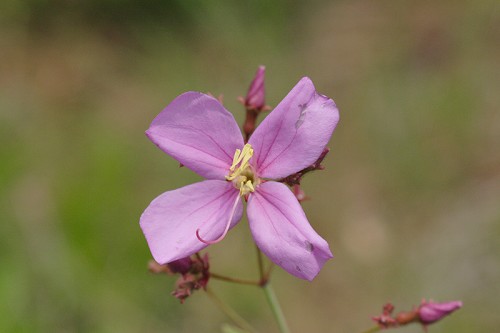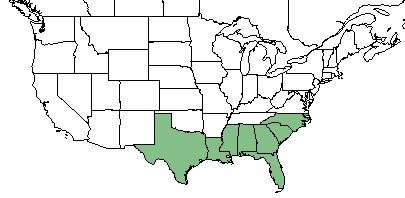Difference between revisions of "Rhexia alifanus"
(→Phenology) |
(→Ecology) |
||
| Line 41: | Line 41: | ||
<!--===Seed bank and germination===--> | <!--===Seed bank and germination===--> | ||
<!--===Fire ecology===--> <!--Fire tolerance, fire dependence, adaptive fire responses--> | <!--===Fire ecology===--> <!--Fire tolerance, fire dependence, adaptive fire responses--> | ||
| − | + | ===Pollination=== | |
| + | Bees are pollinators for ''R. alifanus''. <ref name= "Singer"> [Pitts-Singer, T. L., et al. (2002). "Insect pollinators of three rare plants in a Florida longleaf pine forest." Florida Entomologist 85(2): 308-316.]</ref> | ||
<!--===Use by animals===--> <!--Herbivory, granivory, insect hosting, etc.--> | <!--===Use by animals===--> <!--Herbivory, granivory, insect hosting, etc.--> | ||
<!--==Diseases and parasites==--> | <!--==Diseases and parasites==--> | ||
Revision as of 12:34, 29 May 2018
| Rhexia alifanus | |
|---|---|

| |
| Photo by John Gwaltney hosted at Southeastern Flora.com | |
| Scientific classification | |
| Kingdom: | Plantae |
| Division: | Magnoliophyta - Flowering plants |
| Class: | Magnoliopsida - Dicots |
| Order: | Myrtales |
| Family: | Melastomataceae |
| Genus: | Rhexia |
| Species: | R. alifanus |
| Binomial name | |
| Rhexia alifanus Walter | |

| |
| Natural range of Rhexia alifanus from USDA NRCS Plants Database. | |
Contents
Taxonomic Notes
Synonym: none
Variety: none
Description
R. alifanus is a perennial forb/herb of the Melastomataceae family that is native to North America. [1]
Distribution
R. alifanus is found in the southeastern United States; specifically in Florida, Georgia, South Carolina, North Carolina, Alabama, Louisiana, Mississippi, and Texas. [1]
Ecology
Habitat
R. alifanus is typically found in pine flatwoods, savannas, and pocosin borders.[2]
Transitions between uplands and lowlands, commonly wet praire, is another common habitat to find R. alifanus. [3]
Phenology
Flowering often occurs in May through July. [4]
Pollination
Bees are pollinators for R. alifanus. [5]
Conservation and Management
Cultivation and restoration
Photo Gallery
References and notes
- ↑ 1.0 1.1 USDA Plant Database
- ↑ Weakley, A. S. (2015). Flora of the Southern and Mid-Atlantic States. Chapel Hill, NC, University of North Carolina Herbarium.
- ↑ [Crandall, R. M. and W. J. Platt (2012). "Habitat and fire heterogeneity explain the co-occurrence of congeneric resprouter and reseeder Hypericum spp. along a Florida pine savanna ecoline." Plant Ecology 213: 1643-1654.]
- ↑ Pan Flora
- ↑ [Pitts-Singer, T. L., et al. (2002). "Insect pollinators of three rare plants in a Florida longleaf pine forest." Florida Entomologist 85(2): 308-316.]